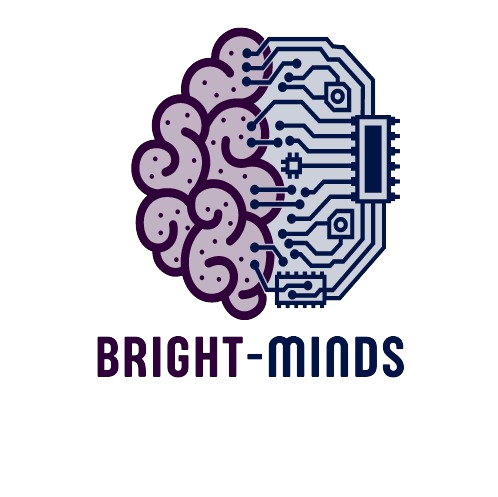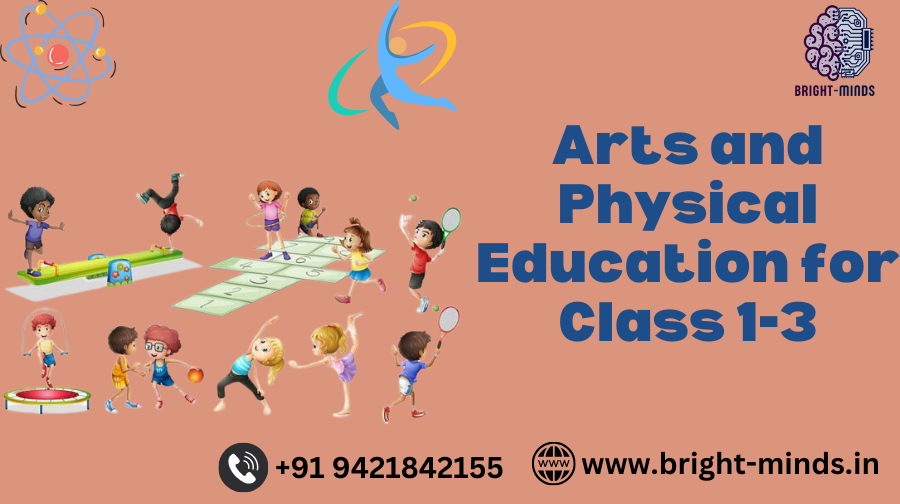
Explore the benefits of integrating Arts and Physical education for Class 1-3 students, fostering creativity, health, and holistic development in young learners
In the early years of education, fostering creativity and physical activity is essential for the holistic development of children. Arts and physical education play a pivotal role in shaping young minds, allowing them to express themselves, develop fine motor skills, and build a foundation for a healthy lifestyle. This article delves into the importance of integrating arts and physical education into the daily curriculum for students in classes 1-3, emphasizing the benefits of developing creativity and the significance of physical activity.
Developing Creativity,Drawing, Painting, and Crafting
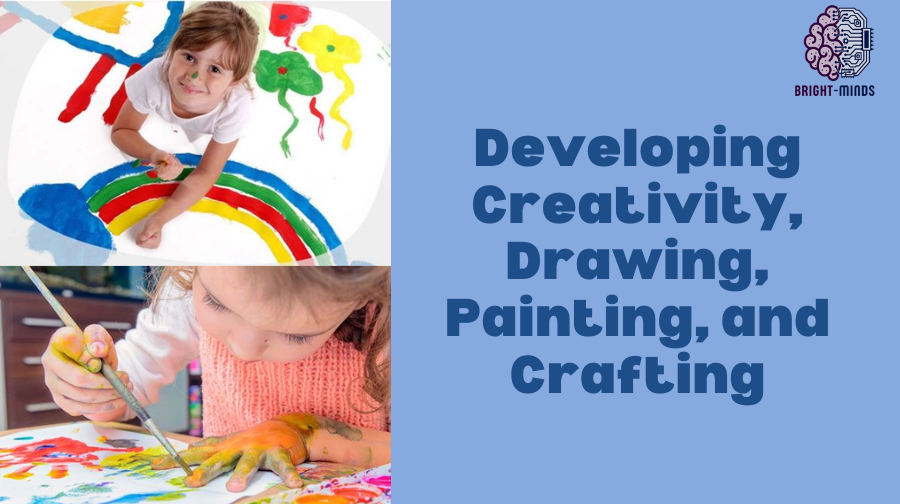
1. The Role of Arts in Early Education
Arts education in the early years goes beyond just drawing and painting; it is about encouraging self-expression, critical thinking, and problem-solving. When children engage in artistic activities, they learn to make decisions, think creatively, and explore new ideas. This not only enhances their creativity but also boosts their confidence and self-esteem.
- Drawing:
- Fine Motor Skills Development: Drawing helps children develop fine motor skills, as they learn to control their hand movements to create shapes, lines, and patterns. This control is crucial for later academic skills, such as writing.
- Imagination and Expression: Through drawing, children can express their thoughts and feelings in a visual format. It allows them to convey ideas that they might not be able to articulate verbally, fostering imagination and storytelling skills.
- Painting:
- Color Recognition and Mixing: Painting introduces children to the world of colors. They learn to recognize primary and secondary colors, experiment with color mixing, and understand the impact of colors on emotions and moods.
- Creativity and Experimentation: Painting encourages experimentation with different techniques, such as brush strokes, sponging, and finger painting. This exploration helps children develop their unique artistic style and fosters creativity.
- Crafting:
- Hand-Eye Coordination: Crafting activities, such as cutting, pasting, and folding, improve hand-eye coordination and dexterity. These skills are vital for everyday tasks and academic pursuits.
- Problem-Solving and Resourcefulness: Crafting projects often require children to think critically about how to use materials and solve problems, such as figuring out how to make a structure stand or how to decorate a project. This fosters resourcefulness and innovation.
2. Integrating Arts into Daily Learning
Integrating arts into daily learning goes beyond scheduled art classes. It involves incorporating creative activities into various subjects to make learning more engaging and enjoyable. For instance:
- Math and Art Integration: Children can learn geometric shapes through drawing or explore symmetry by creating symmetrical art pieces. This helps them understand mathematical concepts in a fun and practical way.
- Storytelling and Art: After reading a story, children can draw their favorite scenes or characters, which reinforces comprehension and enhances their connection with the narrative.
- Science and Crafting: Simple science projects, such as creating a model of the solar system or crafting a butterfly lifecycle, combine art and science, making learning interactive and memorable.
Importance of Physical Activity: Basic Exercises and Games
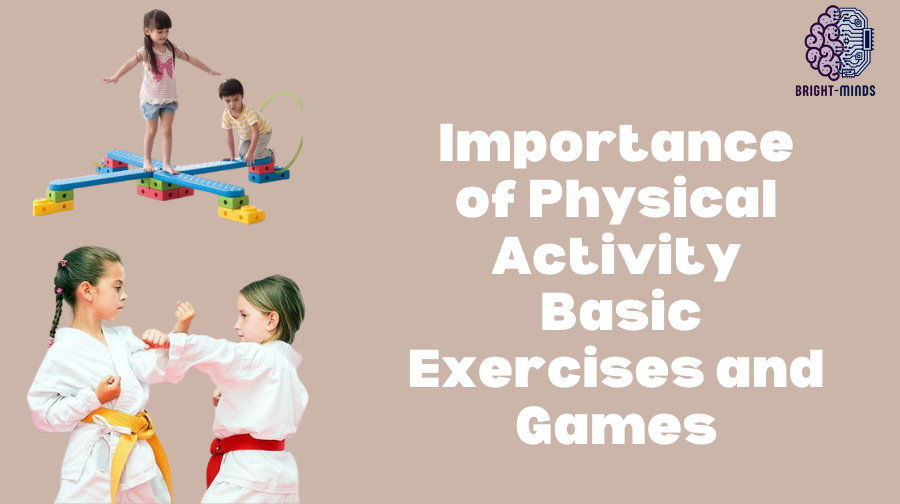
1. Physical Education in Early Years
Physical activity is crucial for the overall health and well-being of young children. It helps in the development of gross motor skills, improves physical fitness, and promotes mental health. Physical education in classes 1-3 should focus on making exercise enjoyable and instilling a love for movement.
- Basic Exercises:
- Strength and Flexibility: Exercises like stretching, bending, and simple yoga poses help children develop strength and flexibility. These activities are essential for their physical growth and prevent injuries.
- Coordination and Balance: Activities such as hopping, skipping, and balancing on one foot improve coordination and balance, which are fundamental motor skills for everyday activities.
- Games:
- Teamwork and Social Skills: Group games like relay races, tag, and ball games teach children about teamwork, cooperation, and following rules. These games also provide opportunities for social interaction and building friendships.
- Endurance and Stamina: Running games and obstacle courses help build endurance and stamina, which are important for maintaining energy levels throughout the day.
2. Incorporating Physical Activity into Daily Routine
Incorporating physical activity into the daily routine doesn’t require a gym or specialized equipment. Simple, playful exercises and games can be integrated into classroom activities and home routines to keep children active and healthy.
- Classroom Movement Breaks: Short, fun activities like dance parties, stretching breaks, or simple exercises can be introduced between lessons to keep children engaged and energized.
- Outdoor Play: Encouraging outdoor play during recess or after school provides children with the opportunity to run, climb, and explore, which is vital for their physical and mental development.
- Family Fitness: Families can participate in simple physical activities together, such as evening walks, cycling, or playing catch in the yard. This not only promotes physical health but also strengthens family bonds.
Integrating Arts and Physical Activities into Daily Learning
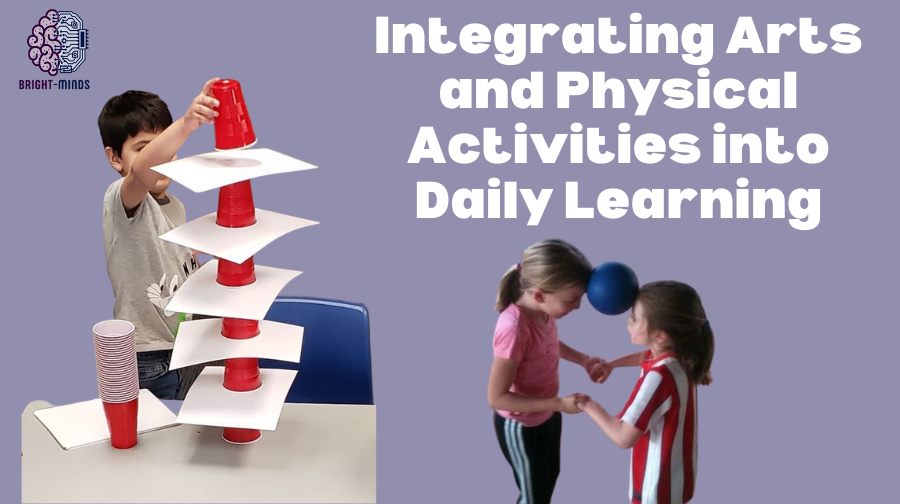
1. The Synergy Between Arts and Physical Education
Combining arts and physical education creates a well-rounded curriculum that addresses both the cognitive and physical development of children. Activities that blend creativity with movement can be particularly effective in enhancing learning and retention.
- Dance and Movement Arts: Integrating dance into the curriculum allows children to express themselves through movement while improving coordination, rhythm, and physical fitness. Dance can also be used to teach cultural awareness and storytelling.
- Creative Physical Games: Games that involve creative thinking, such as creating obstacle courses or inventing new games, combine physical activity with problem-solving and imagination.
- Art-Based Physical Activities: Activities like mural painting or large-scale art projects that require movement, such as rolling out large sheets of paper on the floor, allow children to engage in physical activity while being creative.
2. Benefits of Integrating Arts and Physical Education
- Holistic Development: A curriculum that integrates arts and physical education promotes the holistic development of children, addressing their cognitive, emotional, social, and physical needs.
- Enhanced Engagement: Creative and physical activities make learning more engaging and enjoyable, leading to better participation and retention of information.
- Improved Mental Health: Both arts and physical education have been shown to reduce stress, improve mood, and enhance overall mental health. This is particularly important in the early years when children are developing their emotional and social identities.
Conclusion
Arts and physical education are essential components of a well-rounded education for young children in classes 1-3. By developing creativity through drawing, painting, and crafting, and emphasizing the importance of physical activity through exercises and games, educators can foster a love for learning and a healthy lifestyle in children. Integrating these elements into daily learning not only enhances academic performance but also supports the overall development of the child, preparing them for future challenges in life. The key is to make these activities fun, engaging, and an integral part of the educational experience, ensuring that children grow up to be well-rounded, creative, and physically active individuals.
you may be interested in this blog here:-
